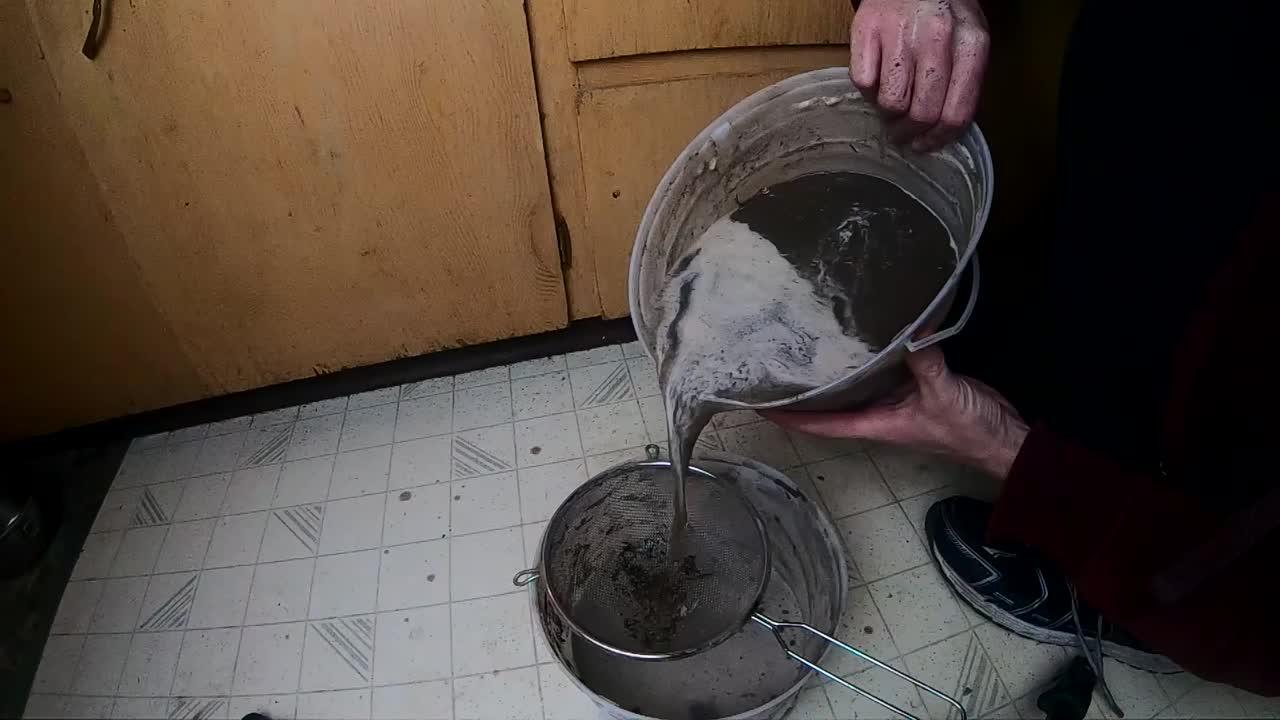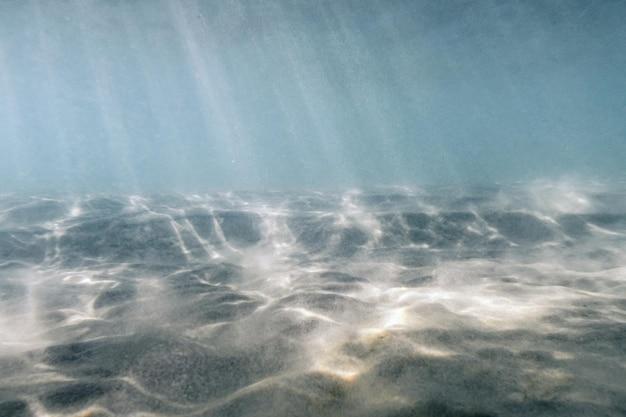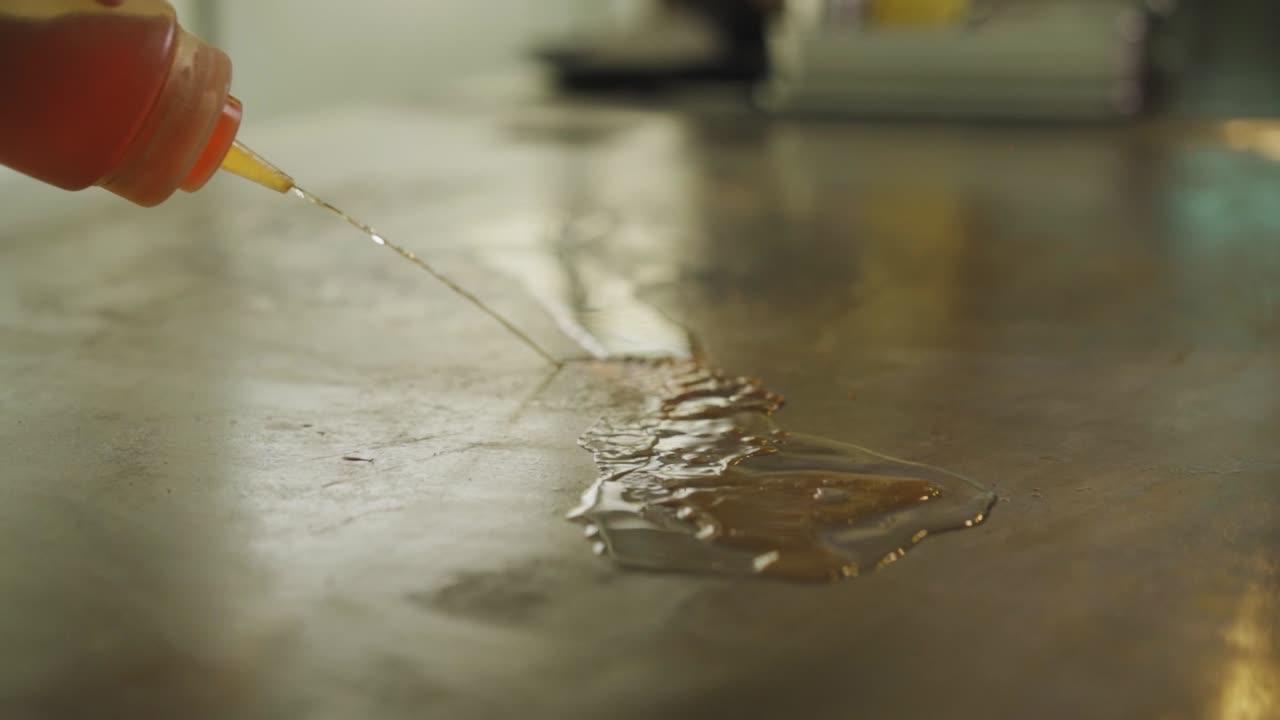Have you ever encountered a situation where your floor suddenly becomes wet even when there is no apparent leak from above? Seeing water seeping up from the ground can be a scary experience. Whether it’s water leaking under floorboards or coming up through the floor after rain, it’s important to know what to do when water gets under flooring. In this blog post, we’ll explore the various reasons why water may be coming from under the floor and provide you with solutions to address the problem. So, if you’re wondering if water under the floor is a problem or what it means when water is coming from under the floor, read on!
Signs that Water is Coming From Under Your Floor
Have you noticed a sudden increase in wet spots on your floor? Or has your home developed a musty smell that refuses to go away? These could be signs that there is water creeping up from under your floor, which is never a good thing. Here are some common indicators that something fishy is going on down there:
Soggy or Warped Wood Floors
When water works its way up through your floorboards, they will start to soak up the moisture. Wooden floorboards, in particular, are highly susceptible to water damage. The longer your floors are exposed to water, the higher the chances of the wood swelling, warping, or rotting.
Growing Mold or Mildew on the Floor
When you see unsightly black or green patches sprouting on your floors or walls, your home may have a moisture problem. These fungi thrive in damp environments and can cause health issues such as respiratory problems, allergies, or asthma.
Unpleasant Smells
Stagnant water can emit a foul odor that’s hard to ignore. If you notice a musty or moldy smell coming from your floors, it’s time to dig deeper and figure out the source of the problem.
Buckling or Misalignment in Your Flooring
As moisture accumulates beneath your floorboards, the wood can start to buckle or warp. This can result in sections of your floor appearing uneven or misaligned.
Now that you know what to look out for, you can take the necessary steps to assess the extent of the damage and find a solution that works best for you. Don’t let water coming from under your floor ruin your home’s foundation and safety. With proper care and attention, you can prevent costly repairs down the line and enjoy a dry and cozy household.
Water on Floor But No Leak: A Puddle Mystery
If you’ve ever woken up to a mysterious puddle of water on your floor, you know the panic that sets in: “Did my pipes burst? Is it raining inside? Is this how horror movies start?” But what if there’s no apparent leak? What if the water seems to be coming from nowhere? Fear not, Sherlock, we’re going to get to the bottom of this puddle mystery.
Check Your Surroundings
Before you start imagining a poltergeist spitting water on your floor, take a look at your surroundings. Is your window open? Did you spill a glass of water last night and forget to clean it up? Did your pet have an accident? These may seem like obvious culprits, but you’d be surprised how easy it is to overlook them in a moment of panic.
Look Up!
If you’re on the ground floor, check the ceiling above the puddle. It’s possible that water is seeping through from a leak in the apartment above you. If you’re in a multi-story building, check the ceiling of the floor directly above you. Don’t be alarmed if you can’t see any visible water damage – water has a sneaky way of traveling through ceilings and walls without leaving a trace.
Don’t Ignore Your AC
If you have central air conditioning, the condensation from the unit can sometimes overflow and create a puddle on the floor. This is usually accompanied by a gurgling or dripping sound. If you suspect this may be the cause, try running your AC in fan mode for a few hours to see if the puddle dries up.
Call In The Pros
If none of these suggestions have helped you solve the mystery of the puddle, it may be time to call in the pros. A plumber or water damage restoration specialist can help you identify the source of the water and recommend a solution. It’s better to be safe than sorry when it comes to water damage – ignoring a small puddle could lead to much larger problems in the future.
At the end of the day, a mysterious puddle on your floor doesn’t necessarily mean the end of the world (or your home). By checking your surroundings, inspecting your ceilings, considering your AC, and calling in the pros if necessary, you’ll be one step closer to solving the puddle mystery.
Water Seeping Up From Ground
As if water coming from under the floor isn’t bad enough, sometimes water decides to seep up from the ground, too! However, this isn’t as uncommon as one might think, and there are several reasons as to why this might happen.
High Water Table
One of the most common reasons for water seeping up from the ground is due to a high water table. Homes that have been built in low-lying areas or areas with naturally high water tables are more susceptible to this issue. When it rains heavily, the water can’t drain normally, and therefore, it rises to the surface.
Faulty Plumbing
Another reason for water seeping up from the ground could be due to faulty plumbing. Leaky pipes or a damaged sewage system can cause water to flow up instead of down, resulting in damp patches in the house.
Poor Drainage
Poor drainage is the third and final reason for water seeping up from the ground. Soil compaction or incorrect grading can cause water to accumulate in certain areas, which can then lead to water coming up through the floors.
Overall, these three reasons are the primary causes of water seeping up from the ground. However, it’s always best to seek professional help to determine the root cause of the problem, as the solution can vary depending on the cause. Stay sharp and make sure your home is flood-free, folks!
Why is my floor suddenly wet
Are you feeling like you’re living in a swamp? Are you tired of stepping on a soggy floor every time you come home? Worry not, because we’ve got some answers for you.
Plumbing Problems
One of the most common reasons for having water coming from under the floor is due to plumbing problems. Usually, it’s a leaky pipe that’s causing the problem. If you’ve noticed low water pressure and rust-colored water, it’s likely that pipes beneath your home may be leaking right now.
Weather Issues
Unless you live in a tropical paradise, sudden wet floors can be caused by weather issues. Rain and snow-melt can penetrate the roof, windows, and basement walls. Even small amounts of moisture can lead to mold and mildew growth in your home. So, make sure to check your roof frequently and clean out any gutters that are clogged with debris.
Overwatering Plants
If you have plants arranged on your floor, there could be a chance that you’re over-watering them. Overwatering plants can create water damage in your flooring. The roots grow too much, and that could cause damage to the floors. So, make sure to water them when it’s necessary, and inspect the planters to ensure they are not leaking.
Not Enough Ventilation
If you live in a humid area and don’t have enough ventilation in your house, you may end up seeing the floor wet. When there’s not enough ventilation, moisture could build up in the air and settle on your flooring. Try opening windows, adding fans, or a dehumidifier to reduce the amount of moisture in the air.
Time to Call a Professional
If you have tried all of the above and still don’t know what’s causing the wet floor, then it’s time to call a professional. There could be an underlying problem that you don’t know about, so it’s better to get it checked by a skilled professional.
In conclusion, water coming from under the floor can be frustrating and even dangerous. By following the above tips, you should be able to find the root cause of the issue. So, go ahead and dry your floor, and enjoy some peace of mind knowing that you’ve got the issue under control!
Is Water Under Floor a Problem
If you’ve ever encountered water coming from under your floor, you may be wondering if this is a problem. Short answer: yes, it definitely is. But let’s explore some of the reasons why.
Damage to Your Flooring
One of the most obvious problems with water coming from under your floor is the damage it can cause to your flooring. Depending on the type of flooring you have, water can warp, stain, or even completely ruin it. And if left unaddressed, the damage can spread to other areas of your home.
Insect Infestations
Water can create the perfect environment for insects like termites and carpenter ants to thrive. These pests are attracted to damp areas and can cause even more damage to your home’s structure.
Mold and Mildew Growth
Another serious issue with water under your floor is the growth of mold and mildew. Not only can this cause a musty odor, but it can also lead to serious health problems if left unchecked. This is especially true for those with allergies or respiratory issues.
Structural Damage to Your Home
Perhaps the most concerning problem with water under your floor is the potential for structural damage to your home. When water seeps into your home’s foundation, it can weaken the structure and cause serious damage over time. This can be costly to repair and can even put your safety at risk.
So yes, water under your floor is definitely a problem. If you notice any signs of water damage or suspect there may be a leak, it’s important to address the issue as soon as possible.
Water Leaking Under Floorboards
When water leaks under the floorboards, it’s not just annoying; it can be a real pain in the neck. Here’s what you need to know to fix it and avoid any future problems:
1. How to Identify Water Leaking Under Floorboards
The first step in solving the problem of water leaking under your floorboards is to identify it. Signs of water leakage include a damp or musty smell, water stains on your floor, and warping or curling floorboards. If you notice any of these signs, it’s time to take action.
2. Causes of Water Leaking Under Floorboards
Water leaking under your floorboards can be caused by several factors. These include burst pipes, leaky pipes, dripping taps, and damaged seals around your bath or shower. If the problem persists, you may want to call a plumber to investigate the cause further.
3. How to Fix Water Leaking Under Floorboards
Once you’ve identified the cause of the leak, it’s time to fix the problem. This may involve repairing or replacing damaged pipes or fittings. If the leak is caused by a damp issue, the floorboards may need to be lifted to dry out the affected area.
4. How to Prevent Water Leaking Under Floorboards
Prevention is always better than cure, so here are some tips for preventing water from leaking under your floorboards in the first place:
- Regularly check for leaks from pipes or fittings.
- Replace damaged seals around baths and showers.
- Dry wet floors immediately.
- Don’t ignore signs of damp or mold.
In conclusion, water leaking under floorboards can be a hassle, but by identifying and fixing the problem promptly, you can avoid any long-term damage to your home. Keep these tips in mind, and you’ll be well on your way to a leak-free home!
Water Coming Up Through Floor After Rain
If you’ve ever experienced water coming up through the floor after rain, don’t panic! This is a common issue that can be caused by a variety of factors. Here are some possible reasons for this phenomenon:
Drainage Issues
If your home’s drainage system is not functioning correctly, you could be experiencing water coming up through the floor after rain. This is because the water has nowhere to go, so it seeps into your home through the path of least resistance. You may need to have your drainage system inspected by a professional and make any necessary repairs.
Cracks in Your Foundation
Cracks in your home’s foundation can allow water to seep in and cause all sorts of problems, including water coming up through the floor after rain. You may need to have your foundation repaired by a professional if this is the case.
Poor Landscaping
The way your yard is landscaped can greatly affect how water flows around your home. If your yard slopes towards your house, rainwater could be pooling up against your foundation and seeping in. Consider re-landscaping your yard to promote proper drainage away from your home.
Just Blame the Rain
Sometimes, the cause of water coming up through the floor after rain could just be the weather. Heavy rain can saturate the ground around your home, causing water to seep in through any available opening. If this is the case, make sure to keep an eye on the forecast and prepare accordingly.
In conclusion, water coming up through the floor after rain can be a frustrating issue to deal with, but it’s not the end of the world. By understanding the possible causes and taking appropriate action, you can protect your home and keep water where it belongs – outside!
What to Do When Water Gets Under Flooring
If you’ve noticed water coming from under your flooring, you’re definitely not alone. It’s a common issue that’s faced by many homeowners and can be caused by a variety of reasons, ranging from a leaky roof to a burst pipe. Whatever the reason may be, there are a few steps you can take to deal with the situation.
Turn Off the Water Supply
The first step to take when you notice water coming from under your flooring is to turn off the water supply. This will help prevent any further water damage and give you enough time to assess the situation. If the water supply cannot be turned off quickly, then shut off the main electrical breaker to eliminate electrical hazards.
Try to Find the Source of the Leak
Once you’ve turned off the water supply, it’s time to try and locate the source of the leak. Check your ceiling, walls, and floors to see if you can pinpoint any visible signs of water damage, such as stains or discoloration.
Remove Water from the Affected Area
If you find the source of the leak, try to clean up any water from the affected area using towels and a wet vac. You can also use fans and dehumidifiers to dry out the area and prevent the growth of mold and mildew.
Contact a Professional
If the water damage is extensive, consider contacting a professional. They have the knowledge, expertise, and equipment needed to assess the situation and advise you on the best course of action. Don’t try to handle the situation on your own and risk further damage.
Take Preventive Measures
Once the water has been cleaned up, ensure that preventive measures are taken to avoid a recurrence. This may involve sealant or repair work to fix the source of the leak, or installing a sump pump or drainage system.
Dealing with water damage can be stressful and overwhelming, but knowing what to do can help alleviate some of the stress. By taking these steps, you can minimize the damage and get your home back to its original condition. Remember that safety is the top priority, and if you’re unsure about any step, it’s always better to seek professional help.
Water Coming From Under Wood Laminate Flooring
So, you’ve got a problem with water coming from under your wood laminate flooring. The good news is that you’re not alone! This is a common issue, and one that can usually be easily resolved.
The Cause of the Problem
First off, let’s take a look at what could be causing the problem. The most likely culprit is some sort of leak or excess moisture. This could be coming from a variety of sources, such as a leaky pipe, a dripping faucet, or even just excess humidity.
The Solution
The first step in solving the problem is to identify the source of the water. Once you’ve done that, you can take steps to fix the issue. This may involve calling in a plumber or other professional to assess the situation and make any necessary repairs.
In the meantime, there are a few things you can do to minimize the damage. First off, make sure to turn off the water supply to the affected area. This will help prevent any further water from seeping into the flooring and causing more damage.
Next, you’ll want to dry the affected area as much as possible. This could involve using a wet/dry vacuum, towels, or even a dehumidifier. The goal here is to remove as much excess moisture as possible so that the flooring can start to dry out.
Preventing Future Problems
Once you’ve solved the issue, it’s important to take steps to prevent future problems. This could involve things like fixing any leaks or addressing any humidity issues in the affected area.
Another option is to invest in waterproof flooring. There are plenty of options out there, from vinyl to tile, that are designed to resist water damage. Of course, this may not be the most cost-effective solution, but it could be worth it in the long run if you’re frequently dealing with water issues.
Dealing with water coming from under your wood laminate flooring can be a frustrating and stressful experience, but it’s not something you have to face alone. By following the steps outlined in this article, you can effectively address the issue and prevent it from happening again in the future. So, don’t delay – get started on solving the problem today!
What Does It Mean When Water Is Coming from Under the Floor
If you notice that water is seeping up from under your floor, it could mean several things, but trust us – none of them are good. So, let’s dive into what could cause such a calamity.
Plumbing Issues
Firstly, it’s essential to note that water under your floor is not normal, unless you have an underground spring or pool beneath your house, which is highly unlikely. It’s more likely that a plumbing problem could be the culprit. Leaking pipes under your floor could cause water to seep up. This could be from damaged pipes or even from the accumulation of grease or oil deposits in the drainage system. So, if you hear a hissing sound, smell dampness or mould, and your floor is wet, call a professional plumber right away.
Drainage Problems
Poor drainage systems can also cause water to overflow beneath your floor. Water from rain and outdoor activities can sometimes find its way under the floor. For instance, if you water your garden close to your house, water could seep through the soil and cause the floor to become flooded. Poorly positioned gutters can also cause water to seep through the ground and collect under your floorboards, causing wetness.
Cracks on Your Foundation
Water could penetrate your house from foundation cracks. If water seems to seep up from the floor after heavy rain or storms, it might be due to foundation damage. Cracks on your foundation can cause water to seep through and flood your floor. So, it’s important to get a foundation repair professional to fix the issue as soon as possible.
In Closing
In conclusion, any time you notice water under your floor, there’s a risk of extensive damage to your house and even your health. It could be a symptom of a much larger problem like a leaking pipe, poor drainage, or foundation damage. Therefore, it is important to always have issues like these addressed by a professional as soon as possible to prevent or mitigate any further damage. Don’t wait until it’s too late.



